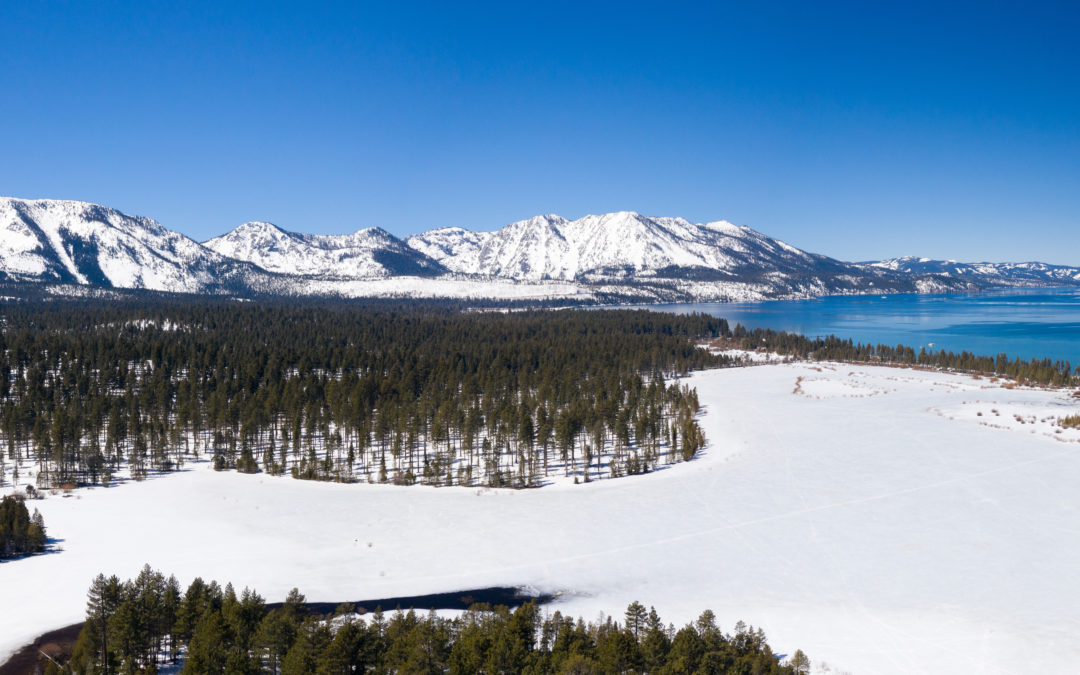 Extreme Storms Challenge Tahoe Communities and Water Quality
Extreme Storms Challenge Tahoe Communities and Water Quality
By Julie Regan
Tahoe’s perseverance has been on full display over the past weeks as residents, businesses, plow drivers, and emergency responders have managed a dangerous and exhausting confluence of atmospheric rivers and winter weather. While we welcome the snowpack and the water it brings, the intensity at which it arrived has major downsides for our communities and the lake.
Since the 1960s, researchers have been measuring the depth of Lake Tahoe’s water clarity as a key indicator of the health of the watershed. Declining lake clarity led to limits on new development and protections for the meadows and wetlands that play an important role in filtering runoff before it enters the lake. While the lake’s long-term clarity has stabilized at around 70 feet, it is exactly this kind of weather system that can flush polluted sediments, not to mention our crumbling roadways, into Lake Tahoe.
A History of Protection
Fortunately, Lake Tahoe agencies and property owners have been improving water quality protections for decades under the Environmental Improvement Program, or EIP. Most of the meadows and streams brimming right now have been restored to a more natural function to better filter run off. Under the EIP, more than 20,000 private properties have completed water quality Best Management Practices, or BMPs to prevent erosion and capture and treat stormwater on site. As for roadways, over 830 miles have been updated through EIP projects to reduce erosion and stormwater pollution.
Since the EIP began in 1997, more than $2.8 billion in public and private investments have been made across all resource areas, with a major portion of federal funding provided through the Lake Tahoe Restoration Act that Tahoe’s congressional leaders are working to extend this legislative session.
And the progress is showing. The basin recently surpassed an interim pollutant load reduction target and more than 600,000 pounds of fine sediment and other pollutants are being kept out of the lake every year. But with every two steps forward we’ve made in Lake Tahoe’s restoration, the effects of a changing climate take us one step back. This makes it even more important to stay the course and continue supporting and maintaining stormwater infrastructure, watershed restoration, transportation improvements, and funding initiatives like the Lake Tahoe Restoration Act.
Climate models are showing that extreme weather – prolonged droughts followed by record snow years – is here to stay.
Seasonality and Deep Lake Mixing
Even though the overall loss of lake clarity has stabilized, heavy flows and rain-on-snow events like we are experiencing now deliver far more sediment to the lake than usual and can cause a big dip in water clarity. Lake clarity readings also vary greatly throughout the year and are typically highest in winter when algae growth has slowed and stream flows are low.
Another winter phenomenon is lake mixing, when the lake essentially flips over and clear water from the bottom replaces the top layer where fine sediment and algae are suspended. Earlier this month, UC Davis researchers released the good news that a full deep-water mix took place in February. Following the flip, water clarity jumped to an incredible 115 feet. Deep mixing is an important process for the lake’s health, however it is happening less often. While the impacts of this winter on clarity won’t be known right away, TRPA and our partners rely on longer-term trends to understand the effectiveness of water quality strategies.
Science Guiding Climate Adaptation
While major strides have been made, there are signs that warmer temperatures are challenging the progress. In just over 50 years, the lake’s average water temperature has risen by 1.4 degrees. Not only is the occurrence of deep-lake mixing changing, but Tahoe is experiencing longer, warmer, and drier summers. With this are growing algal blooms, lower water clarity readings in summer, and improved habitat for aquatic invasive species.
TRPA is working with research institutions through the Tahoe Science Advisory Council to not only better understand the drivers of water quality under a changing climate, but also on additional management strategies and policies to continue meeting water quality targets. Ultimately, restoring Lake Tahoe’s historic clarity is a long-term commitment shared by all of us. I encourage you to learn more about our water quality work and what you can do at trpa.gov.
A special thanks goes out to the many responders from state and local agencies who have been out clearing roofs, inspecting buildings, and busting through ice dams to keep us all safe. Living at Lake Tahoe takes a special kind of grit and determination, but when conditions reached dangerous and historic levels, you rose to the occasion and literally bailed us out. Thank you all!

